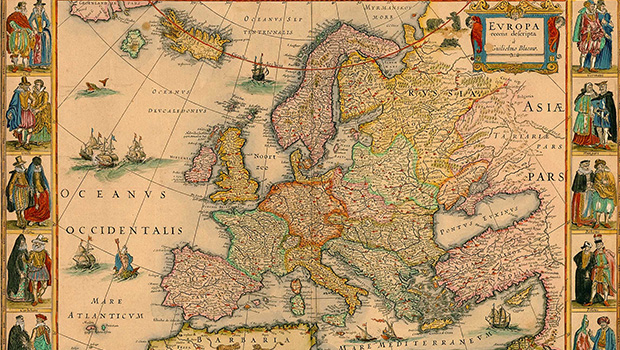Have you ever read A Tale of Two Cities by the great Charles Dickens with the infamous opening line “it was the best of times, it was the worst of times”? This best-selling novel of all time is set in Paris and London before and during the French Revolution, depicting the comedy and tragedy of those times.
Paris and London are key cities in Europe that have won over the hearts of many people around the world. They are cities of destination. But do you know the history behind these names, that are in your bucket list of dream vacations and places to see before you die?
What better way to look back on the genesis of cities than by knowing where their names come from and what they mean in the first place? This is what we call toponymy, the study of the origins and meanings of place names or “toponyms”, although most of them are veiled in mystery and theory.
From London, Amsterdam, Antwerp, Paris, Madrid, and Rome to Prague, Bucharest, Zagreb, and Ljubljana, this tale of ten cities will take you on an etymological journey from Europe’s Western to Eastern cities and back.
- LONDON, United Kingdom: It was derived from Londinium, a former settlement in the heart of Roman Britain. But the origin of the name is shrouded in mystery. The most popular theory is that it came from the name of King Lud, an ancient and legendary conqueror of Britain who supposedly founded the city.
- AMSTERDAM, The Netherlands: The origin of the city’s name is what the Netherlands is known for: dams. The name literally translates to “dam on the Amstel River”. Amstel in Old Dutch means an “area abounding with water”.
- ANTWERP, Belgium: The most popular theory to the origin of the city’s name is that of the legend of a horrid and evil giant named Antigoon. He dwelled by the Scheldt River where he demanded a toll from anyone wanting to cross the river. Those who refused to pay had one of their hands cut off and thrown in the Scheldt. Thus the name “Antwerp”, meaning “hand thrown”. A statue of the mythical giant can be found in front of the city’s town hall.
- PARIS, France: No, the city’s name does not come from the fictional Paris from Homer’s Iliad. It was in fact derived from the Parisii, the first known tribe to have settled in the area.
- MADRID, Spain: Historians and linguists have fought over where the city’s name truly comes from. According to a Spanish legend, the city was either named Metragirta or Mantua Carpetana by Ocno Bianor, a mythological hero and founder of the city. Others argue that it came from the medieval Ursaria, meaning “land of bears” and madroño or “strawberry tree” in Spanish. These terms later evolved to what we now know as Madrid.
- ROME, Italy: It is derived from arguably one of the most popular legends in Europe. Romulus and Remus were twin brothers who were cared for by a she-wolf in the forest. They became mighty warriors during manhood. In a heated quarrel on how to call the city they have just founded, Romulus ends up killing Remus, naming the city after himself. Rome’s root word was possibly derived from Ῥώμη, a Greek term that refers to bravery or courage or rum-, meaning “tit”, associated with Romulus and Remus being suckled by the wolf.
- PRAGUE, Czech Republic: Praha, the city’s native name, originated from práh, a modern Czech term meaning “threshold”. According to one legend, Duchess Libuše, the prophetess and wife to the fictional founder of the Přemyslid dynasty, ordered for the city to be built “where a man hews a threshold of his house”.
- BUCHAREST, Romania: It is often associated with the name Bucur. Many legends depict him as either a hunter, a fisherman, a shepherd, a bandit, or a prince who was behind the founding of the city.
- ZAGREB, Croatia: One possible theory is it comes from zagrabiti, a Croatian word meaning “scoop”, associated to a popular legend about a Croat viceroy and his troops who were crossing a deserted area. Due to his frustration and thirst, this viceroy hit the ground with his sabre, accidentally hitting a water source. He ordered his men to dig or “scoop”, hence the city’s name.
- LJUBLJANA, Slovenia: It is unclear where the name came from, but common folk affiliate it with ljubljena, a Slovene word meaning “beloved”. How lovely!
Many tales behind European cities’ names revolve around contradictory themes of good and bad, peace and war, love and hate, success and failure. The ups and downs of the human condition we can reflect on for our present and future.
As the cliché goes, to know our future and live fully in the present, we must know our past. For Europe’s modern urban population, everything we are and society as we know it started and will end in cities. As the last few lines to A Tale of Two Cities go:
“I see a beautiful city and a brilliant people rising from this abyss, and, in their struggles to be truly free, in their triumphs and defeats, through long years to come, I see the evil of this time and of the previous time of which this is the natural birth, gradually making expiation for itself and wearing out”.

Leave a Reply